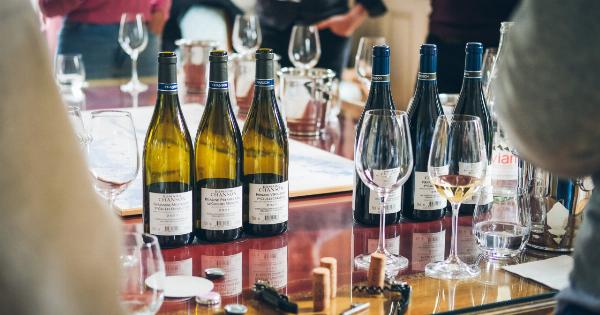Wine is a complex drink, and many factors can influence its flavor profile. From the vineyard where the grapes are grown to the winemaking process, every step can impact the taste, aroma, and texture of a glass of wine.
Here are ten factors that can significantly affect the flavor of wine:.
1. Grape Variety
The type of grape used to make wine is one of the most important factors when it comes to flavor. Different grape varieties have distinct flavor profiles, and many winemakers will blend different types to achieve a particular taste.
For example, a Cabernet Sauvignon grape has a different flavor than a Chardonnay grape, and the same goes for Pinot Noir and Sauvignon Blanc.
2. Climate
The climate in which grapes are grown can significantly impact their flavor. Grapes grown in cooler climates tend to have higher acidity levels, resulting in a crisp, tart taste. Grapes grown in warmer climates tend to be sweeter and more full-bodied.
Climate can also influence the ripeness of the grapes, which affects the sugar and acid levels in the wine.
3. Soil
The type of soil in which grapes are grown can also play a role in the wine’s flavor profile. Different soils have distinct nutrient levels, and this can influence the grapes’ growth.
For example, grapes grown in a soil with higher levels of potassium will produce wines with a more robust acidity. Grapes grown in limestone-rich soil can create wines with a mineral-like taste.
4. Harvesting Technique
The method used to harvest grapes can also affect the wine’s flavor. Grapes that are harvested by hand tend to be of higher quality than those harvested by machines.
Handpicked grapes are often more uniform in size and ripeness, resulting in a more consistent flavor profile.
5. Fermentation
The process of fermentation is what turns grape juice into wine. During fermentation, yeast consumes the grape sugars, converting them into alcohol. The length of fermentation and the temperature at which it occurs can influence the wine’s flavor.
High-temperature fermentation tends to result in a more full-bodied wine, while cooler temperatures can create a crisper taste.
6. Oak Aging
Many wines are aged in oak barrels, which can impart flavors of vanilla, spice, and toast. The type of oak used and the length of time the wine spends in the barrel can influence the flavor.
Wine aged in new oak barrels will often have stronger flavors than wine aged in older barrels.
7. Malolactic Fermentation
Malolactic fermentation is a secondary fermentation process that can give wine a buttery taste. This fermentation converts the tart-tasting malic acid into a softer, creamier lactic acid.
Many red wines undergo malolactic fermentation, but it is less common in white wines.
8. Aging
The length of time wine is aged can significantly affect its flavor. Aging can soften the tannins in red wine and create a more complex flavor profile. In white wine, aging can add a nutty taste or enhance the fruit flavors.
Some wines are meant to be consumed young, while others are designed to be aged for years before drinking.
9. Blending
Many winemakers will blend different grape varieties or vintages to create a desired flavor profile. Blending allows winemakers to balance flavors and create a more complex taste.
For example, a winemaker might blend a young, fruit-forward wine with an older, more mature wine to create a wine with a full-bodied but fruity taste.
10. Bottle Aging
Wine can continue to develop and change flavors after it is bottled. As the wine sits in the bottle, it can develop more complex flavors and a smoother texture.
Some wines are designed to be aged in the bottle, while others are meant to be consumed within a few years of bottling.































